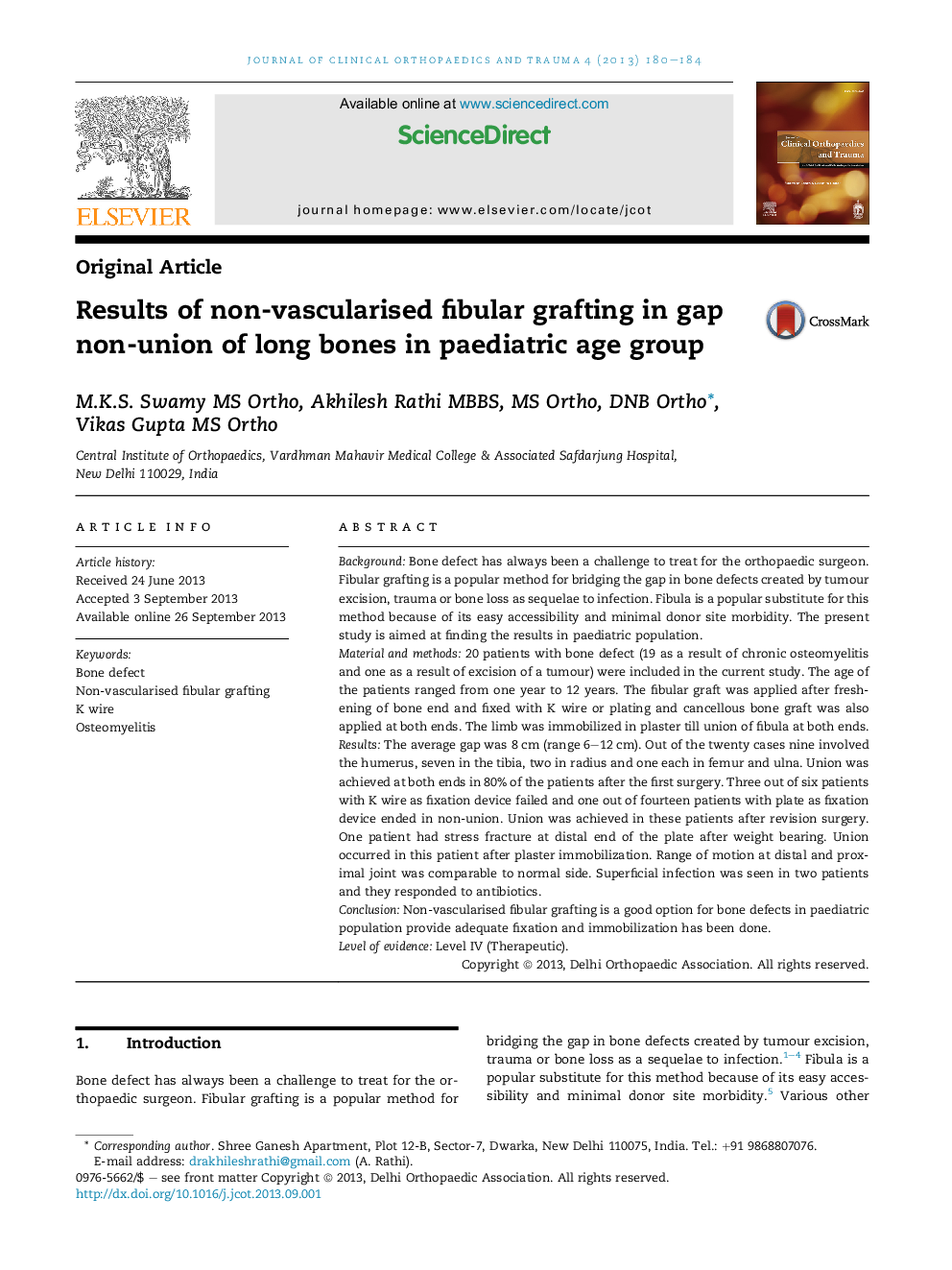| Article ID | Journal | Published Year | Pages | File Type |
|---|---|---|---|---|
| 3245483 | Journal of Clinical Orthopaedics and Trauma | 2013 | 5 Pages |
BackgroundBone defect has always been a challenge to treat for the orthopaedic surgeon. Fibular grafting is a popular method for bridging the gap in bone defects created by tumour excision, trauma or bone loss as sequelae to infection. Fibula is a popular substitute for this method because of its easy accessibility and minimal donor site morbidity. The present study is aimed at finding the results in paediatric population.Material and methods20 patients with bone defect (19 as a result of chronic osteomyelitis and one as a result of excision of a tumour) were included in the current study. The age of the patients ranged from one year to 12 years. The fibular graft was applied after freshening of bone end and fixed with K wire or plating and cancellous bone graft was also applied at both ends. The limb was immobilized in plaster till union of fibula at both ends.ResultsThe average gap was 8 cm (range 6–12 cm). Out of the twenty cases nine involved the humerus, seven in the tibia, two in radius and one each in femur and ulna. Union was achieved at both ends in 80% of the patients after the first surgery. Three out of six patients with K wire as fixation device failed and one out of fourteen patients with plate as fixation device ended in non-union. Union was achieved in these patients after revision surgery. One patient had stress fracture at distal end of the plate after weight bearing. Union occurred in this patient after plaster immobilization. Range of motion at distal and proximal joint was comparable to normal side. Superficial infection was seen in two patients and they responded to antibiotics.ConclusionNon-vascularised fibular grafting is a good option for bone defects in paediatric population provide adequate fixation and immobilization has been done.Level of evidenceLevel IV (Therapeutic).
